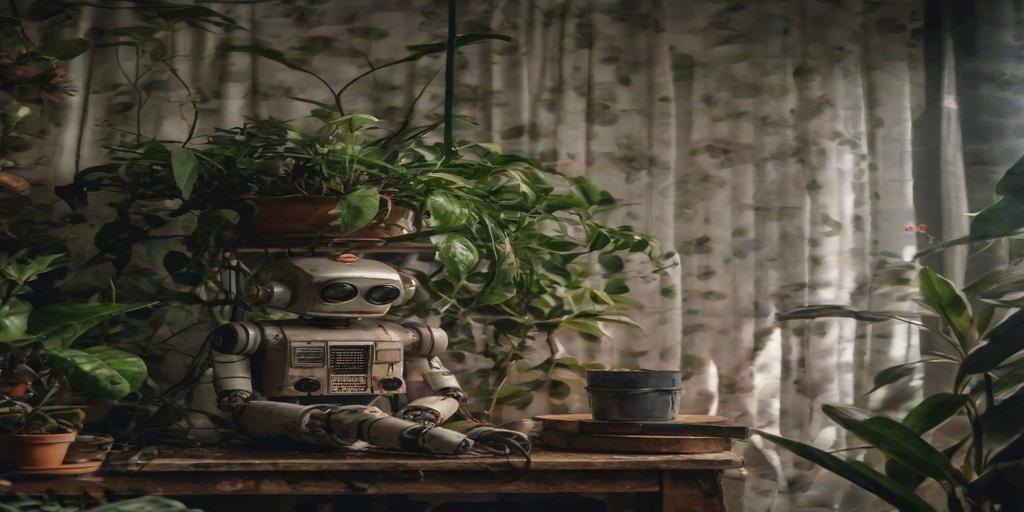
How to Prevent Mold on Your Low Light Hanging Plants (2025 Guide)
Struggling with mold on your low light hanging plants? Learn expert tips to prevent mold growth, improve plant health, and keep your indoor greenery thriving!
Introduction
Did you know that mold thrives in damp, low-light environments—exactly where your hanging plants love to grow? If you’ve noticed fuzzy white or gray patches on your plants, you’re not alone! Mold can weaken your plants, cause root rot, and even trigger allergies. But don’t worry—with the right care, you can keep your low light hanging plants mold-free and lush. In this guide, we’ll cover everything from proper watering techniques to natural antifungal solutions. Let’s dive in!
Understanding Mold Growth in Low Light Conditions
Why Mold Loves Low Light and High Humidity
Mold thrives in environments where moisture lingers and airflow is limited—exactly the conditions found in many low-light spaces. Without strong sunlight to dry out soil and leaves, excess moisture creates the perfect breeding ground for mold spores. High humidity levels, common in bathrooms or basements, only make the problem worse. Mold doesn’t need sunlight to grow—it feeds on organic matter like decaying leaves and damp soil, making your hanging plants an easy target.
Common Types of Mold Affecting Indoor Plants
Not all mold is created equal. Some common types you might spot include:
-
Powdery mildew: A white, powdery coating on leaves.
-
Sooty mold: Dark, sticky patches often caused by pest secretions.
-
Gray mold (Botrytis): Fuzzy gray growth on dying leaves or flowers.
Each type can weaken your plant by blocking sunlight or encouraging rot, so early identification is key.
Signs Your Hanging Plant Has Mold
Keep an eye out for these red flags:
-
Visible spores: White, black, or green fuzzy spots on soil or leaves.
-
Musty smell: A damp, earthy odor is a telltale sign of hidden mold.
-
Yellowing leaves: While this can signal other issues, combined with damp soil, it often points to mold or root rot.
Choosing the Right Plants for Low Light Areas
Best Mold-Resistant Hanging Plants for Low Light
Not all plants are equally prone to mold. Some hardy options include:
-
Pothos: Tolerates low light and irregular watering.
-
Snake Plant: Thrives on neglect and resists mold.
-
ZZ Plant: Stores water in its roots, reducing the need for frequent watering.
These plants have thick leaves or slow growth, making them less susceptible to mold compared to delicate ferns or flowering varieties.
How Plant Selection Impacts Mold Susceptibility
Plants with thin leaves or high moisture needs (like ferns) are mold magnets in low light. Conversely, succulents and waxy-leaved plants retain moisture internally, reducing surface dampness. Always research a plant’s humidity preferences before placing it in a dim corner.
Traits to Look for in Low-Maintenance, Mold-Resistant Plants
Prioritize plants with:
-
Thick or waxy leaves: Less prone to holding moisture.
-
Slow growth: Fewer decaying leaves to attract mold.
-
Drought tolerance: Won’t suffer if you skip a watering.
Proper Watering Techniques to Prevent Mold
How Overwatering Contributes to Mold Growth
Overwatering is the #1 cause of mold. Soggy soil suffocates roots and creates a stagnant environment where mold thrives. In low light, plants use water more slowly, so they need less frequent watering than those in bright spots.
The “Soak and Dry” Method for Low Light Plants
Instead of light, frequent watering, try this:
-
Water thoroughly until it drains from the pot’s bottom.
-
Let the soil dry almost completely before watering again.
This mimics natural rainfall and prevents constant dampness.
Using Moisture Meters to Avoid Soggy Soil
A moisture meter takes the guesswork out of watering. Insert it into the soil—if it reads “wet,” hold off. Aim for “dry” or “moist” before rewatering. Cheap and effective, these tools are a game-changer for low-light plant care.
Improving Air Circulation Around Hanging Plants
Why Airflow Is Crucial in Preventing Mold
Stagnant air lets humidity build up around leaves and soil. Gentle airflow helps evaporate excess moisture and disrupts mold spores before they settle. Think of it as giving your plants room to “breathe.”
Tips for Spacing and Positioning Hanging Plants
-
Avoid overcrowding: Leave space between plants to let air circulate.
-
Rotate occasionally: Ensures all sides get equal airflow and light exposure.
-
Hang near doorways or vents: Natural air movement helps (but avoid direct drafts).
Using Small Fans to Reduce Humidity Buildup
A small oscillating fan on low speed can work wonders. Position it nearby to create a gentle breeze—just enough to rustle leaves slightly. Run it for a few hours daily, especially in humid rooms.
Soil and Potting Mix Strategies
Best Well-Draining Soil Mixes for Low Light Plants
Standard potting soil often retains too much moisture. Opt for mixes labeled “for succulents” or “well-draining,” or make your own with:
-
2 parts potting soil
-
1 part perlite or pumice
-
1 part orchid bark
This combo ensures water flows through quickly, reducing mold risks.
Adding Perlite or Orchid Bark to Improve Aeration
Perlite (those white, pebble-like bits) and orchid bark create air pockets in soil, preventing compaction. They’re especially helpful for plants like philodendrons or hoyas that hate “wet feet.”
When to Repot to Prevent Mold Accumulation
If mold keeps returning despite good care, the soil might be spent. Repot every 1–2 years with fresh mix, and scrub the pot with diluted bleach to kill lingering spores.
Natural and Chemical Mold Prevention Solutions
Homemade Antifungal Sprays
For a gentle approach, try:
-
Cinnamon water: Steep cinnamon sticks in warm water, spray on soil.
-
Neem oil mix: 1 tsp neem oil + 1 quart water + a drop of dish soap.
-
Baking soda spray: 1 tbsp baking soda + 1 quart water (test on a leaf first).
These disrupt mold without harsh chemicals.
Safe Commercial Fungicides for Indoor Plants
Look for products containing copper or sulfur, which are effective yet plant-friendly. Always follow label instructions—some require dilution.
How to Clean Mold Off Leaves and Stems
For light mold:
-
Wipe leaves with a damp cloth dipped in diluted hydrogen peroxide (1:4 ratio).
-
Rinse with clean water and dry gently.
Avoid scrubbing—damaged leaves are more vulnerable to reinfection.
Routine Maintenance and Early Detection
Weekly Inspection Checklist for Mold and Pests
Spend a few minutes each week:
-
Check leaves: Both tops and undersides for spots or fuzz.
-
Sniff the soil: A musty odor means trouble.
-
Inspect stems: Look for discoloration or soft spots.
Pruning Dead or Decaying Leaves to Prevent Mold Spread
Remove yellow or dead leaves promptly—they’re mold magnets. Use clean scissors and discard debris (don’t compost moldy plant parts).
Seasonal Adjustments for Humidity and Light Changes
-
Winter: Reduce watering and run a dehumidifier if needed.
-
Summer: Increase airflow or move plants to slightly brighter spots (but keep them out of direct sun).
By staying proactive, you can enjoy lush hanging plants without the moldy headaches.
Conclusion
Mold doesn’t have to ruin your beautiful low light hanging plants! By choosing the right plants, watering wisely, improving airflow, and using natural preventatives, you can keep mold at bay. Remember—early detection is key, so inspect your plants regularly and adjust care as needed. Ready to enjoy healthier, mold-free greenery? Start applying these tips today!
